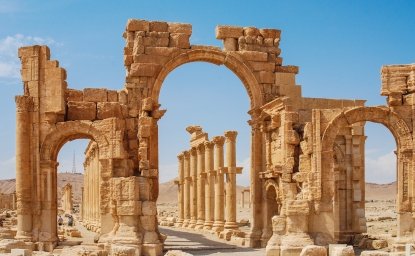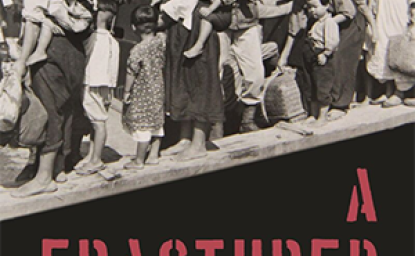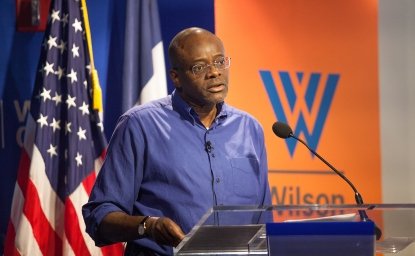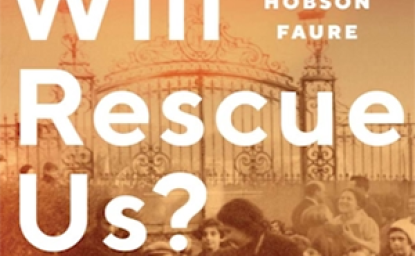The First Attempt at Argentine-Brazilian Nuclear Cooperation and the Argentine Response, 1967-1972



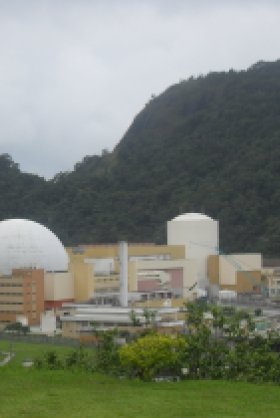
With the aim of creating effective nuclear cooperation with Buenos Aires, Brazilian President Arthur da Costa e Silva approved, on 14 September 1967, the “start of preliminary conversations with a view to putting into motion the formal negotiating process for the future signature with Argentina of an Agreement on Cooperation for Nuclear Development with Peaceful Purposes.” (Document 1)
Upon Costa e Silva’s assumption of the government of Brazil, in March 1967, the nuclear question had once again become one of the highest priorities for the Administration. According to documentary sources, the new Brazilian government considered important to establish nuclear cooperation agreements with Argentina for three main reasons:
- to establish a definitive understanding about the Argentine and Brazilian stance regarding the Treaty of Tlatelolco, which aimed to make Latin America a nuclear weapons free zone (the treaty was open for signature but neither country had yet joined);
- to cultivate allies in order to strengthen Brazil´s position at the Conference on Disarmament in Geneva in negotiations to establish a global nuclear non-proliferation treaty;
- in order to establish effective cooperation in the nuclear field with a country of similar degree of development in Latin America. (Document 2)
Initially, the Brazilian interest was conveyed to the authorities in Argentina at the meeting of Foreign Ministers of the Latin American Free Trade Association in 1967. The Brazilian representative, José de Magalhães Pinto, delivered a memorandum to the Argentine Foreign Minister, Nicanor Costa Méndez, suggesting the establishment of contacts between the nuclear commissions of both countries at upcoming International Atomic Energy Agency conference in Vienna.
In order to reinforce Brazil´s interest in signing nuclear cooperation agreements with Argentina, in December 1967, the President of the National Nuclear Energy Commission of Brazil (CNEN) invited his Argentine counterpart, Admiral Oscar Quihillalt, to visit Brazil´s nuclear facilities. The main purpose of this invitation was to create the necessary conditions for the establishment of nuclear cooperation between the two countries.
In March 1968, the Argentine Foreign Ministry authorized the Argentine National Atomic Energy Commission (CNEA) to send a group of nine Argentine scientists to Brazil. After acquainting themselves with the Brazilian nuclear program and visiting all its facilities, the group of Argentine scientists, headed by Admiral Quihillalt, received a project of nuclear cooperation by Brazilian nuclear authorities. A draft project with Argentine suggestion´s to the Brazilian project include joint studies in centrifuge technology and peaceful nuclear explosives, among other significant aspects (Document 2, Document 4)
Both CNEA and the Argentine Foreign Ministry reacted favorably to the Brazilian initiative. The authorities of the Argentine nuclear agency believed that great benefits would derive from the establishment of an exchange of experiences in the technical field. They also were confident that the agreement was an opportunity to build a “common front” at international organizations, such as the UN and the IAEA, with a view to obtaining more technical assistance for regional projects. (Document 3) The Argentine Foreign Ministry, for its part, conditioned its signature to the question of the seat of the agreement, which they wanted to be Buenos Aires. (Document 5)
Argentine-Brazilian talks were momentarily stalled when President Costa e Silva’s illness and subsequent death in the winter of 1969. Nevertheless, the new Brazilian administration kept on pushing for a nuclear cooperation agreement with Argentina. After being carefully examined by the Brazilian National Security Council, a new proposal on a nuclear cooperation treaty with Buenos Aires was approved by the Brazilian President, Emilio Garrastazu Médici, in November 1970. (Document 1)
However, by the end of 1969, a series of factors led to a change in the initial Argentine position. During talks between the Argentine Foreign Ministry and CNEA, the Ministry indicated to the Argentine nuclear agency the “convenience” of postponing the signature of a nuclear agreement with Brazil until “general conditions of our relationship with Brazil become more favorable.” (Document 6)
Towards the end of the 1960´s, there was a growing imbalance between the two historic competitors in South America, which benefitted Brazil in detriment of Argentina. The “Brazilian economic miracle” (1968-1973), in which Brazil´s economy experienced a 9% GDP growth rate, as well as the understanding between Washington and Brasilia woven by the American Secretary of State, Henry Kissinger, led Buenos Aires to adopt a defensive posture in its bilateral dialogue with Brasilia. Argentina’s weakened negotiating position was noted in the Argentine-Brazilian presidential summit which took place in March 1972, where the Argentine President, Agustín Lanusse, expressed publicly Argentina´s concern on Brazil´s growing influence in the strategic Plata river basin as well as Brazil-U.S. talks. It can be concluded that Argentine-Brazilian nuclear talks had lost its momentum due to non-nuclear related factors. Nevertheless, India´s PNE in May 1974 will present a significant stimulus to both countries to regain nuclear negotiations on the grounds of establishing mutual reassurances on peaceful uses of nuclear energy.
Document 1: Exposição de Motivos from the National Security Council to the President of the Republic,[1] 11 September 1974, secret.
Source: Archive of the Brazilian Foreign Ministry (Brasilia). Obtained and translated by Fundação Getúlio Vargas.
This document describes the several attempts at establishing cooperation on nuclear matters in the period 1968-1974, revealing the first two attempts on an Argentine-Brazilian nuclear cooperation agreement.
Document 2: Minutes of the 40th Meeting of the National Security Council, 4 October 1967, secret.
Source: Archive of the Brazilian Foreign Ministry (Brasilia). Obtained and translated by Fundação Getúlio Vargas.
This document reveals the priorities of President Costa e Silva in the field of nuclear energy and presents the Brazilian strategy that should be followed in the external field in order to strengthen Brazil´s negotiating position in international organizations.
Document 3: President Costa e Silva to the President of CNEA, 5 December 1967, secret, and Note from the latter to Foreign Minister Nicanor Costa Mendez, 29 December 1967, secret.
Source: Archive of the Brazilian Foreign Ministry (Brasilia). Obtained and translated by Fundação Getúlio Vargas.
This document conveys the Brazilian interest in signing a nuclear cooperation agreement with Argentina, expressed on the occasion of the visit of a Brazilian group to the opening of the Ezeiza Atomic Center in Buenos Aires, in 1967.
Document 4: Draft project on nuclear cooperation, 1968.
Source: Archive of the Brazilian Foreign Ministry (Brasilia). Obtained and translated by Fundação Getúlio Vargas.
This document is a draft project of a nuclear cooperation agreement between Argentina and Brazil, very likely the same one given by Brazilian authorities to the Argentine CNEA mission during the latter’s visit to Brazil in March 1968.
Document 5: “Nuclear Energy,” 15 January 1968, secret.
Source: AMRECIC, Caja Brasil AH0124. Archives of the Ministry of External Relations and Culture, Argentina. Obtained and translated by Fundação Getúlio Vargas.
This document is included in a briefing folder prepared on the occasion of the trip of the Argentine Foreign Minister Nicanor Costa Mendez to Brazil. On the issue of nuclear energy, it suggests that if the Argentine National Security Council approved a nuclear agreement, the signing ceremony for such a project should take place in Buenos Aires to avoid the appearance of “Brazilian supremacy” in the nuclear question.
Document 6: Note from the director of CNEA to the Argentine Foreign Minister, 16 February 1972, secret.
Source: AMRECIC, Caja Brasil AH0124.
This document reports the opinion of CNEA on the state of Argentine-Brazilian nuclear cooperation on the eve of the 1972 Médici-Lanusse meeting. Quihillalt argues that since 1968 CNEA favored an agreement with Brazil. He declares, however, that the Argentine Foreign Ministry did not give instructions to make progress in the negotiations.
Disclaimer: This dossier is the result of an ongoing research on the international history of Brazil’s nuclear program. The above historical narrative and selection of documents and oral history interviews may be updated as new and relevant evidence is uncovered.
[1] Exposição de Motivos" is the official designation of a formal written communication addressed to the President of the Republic (Translator's note).
Author

Nuclear Proliferation International History Project
The Nuclear Proliferation International History Project is a global network of individuals and institutions engaged in the study of international nuclear history through archival documents, oral history interviews, and other empirical sources. Read more


Cold War International History Project
The Cold War International History Project supports the full and prompt release of historical materials by governments on all sides of the Cold War. Read more


History and Public Policy Program
A leader in making key foreign policy records accessible and fostering informed scholarship, analysis, and discussion on international affairs, past and present. Read more

